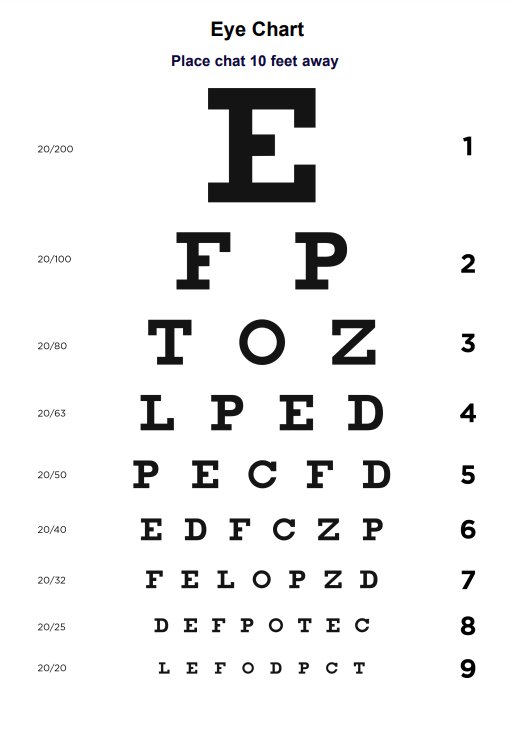To use the eye chart template, follow the steps outlined in this guide's "How does this Printable Eye Chart work" section. The key steps involve printing the chart, positioning it correctly, testing each eye separately, recording the results, and interpreting the scores.

Eye Chart
Discover our free Printable Eye Chart, designed for eye care professionals looking to test visual acuity. Download your eye chart PDF today!
Eye Chart Template
Commonly asked questions
Interpret the eye chart results by comparing the test taker's visual acuity measurements to standard visual acuity levels. For example, 20/20 vision is considered "normal," while 20/40 vision indicates that the test taker can see at 20 feet what someone with normal vision can see at 40 feet. Results outside the normal range may warrant further evaluation by an eye care professional.
The eye chart is scored based on the smallest row of letters that the test taker can read accurately. This is expressed as a fraction, such as 20/20, 20/40, etc. The numerator represents the distance from the chart (20 feet), and the denominator represents the distance a person with "normal" vision could read the same line.
EHR and practice management software
Get started for free
*No credit card required
Free
$0/usd
Unlimited clients
Telehealth
1GB of storage
Client portal text
Automated billing and online payments











